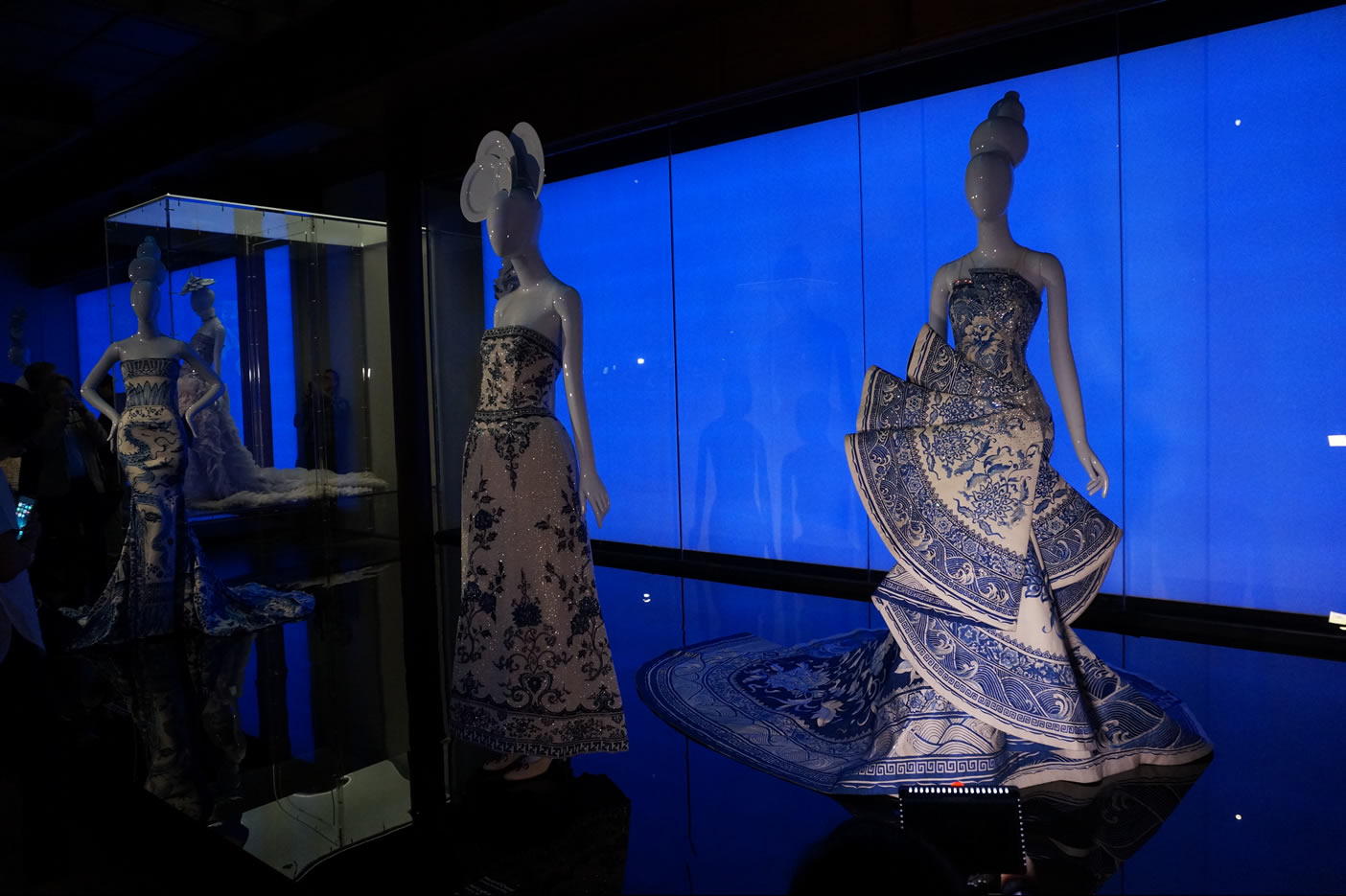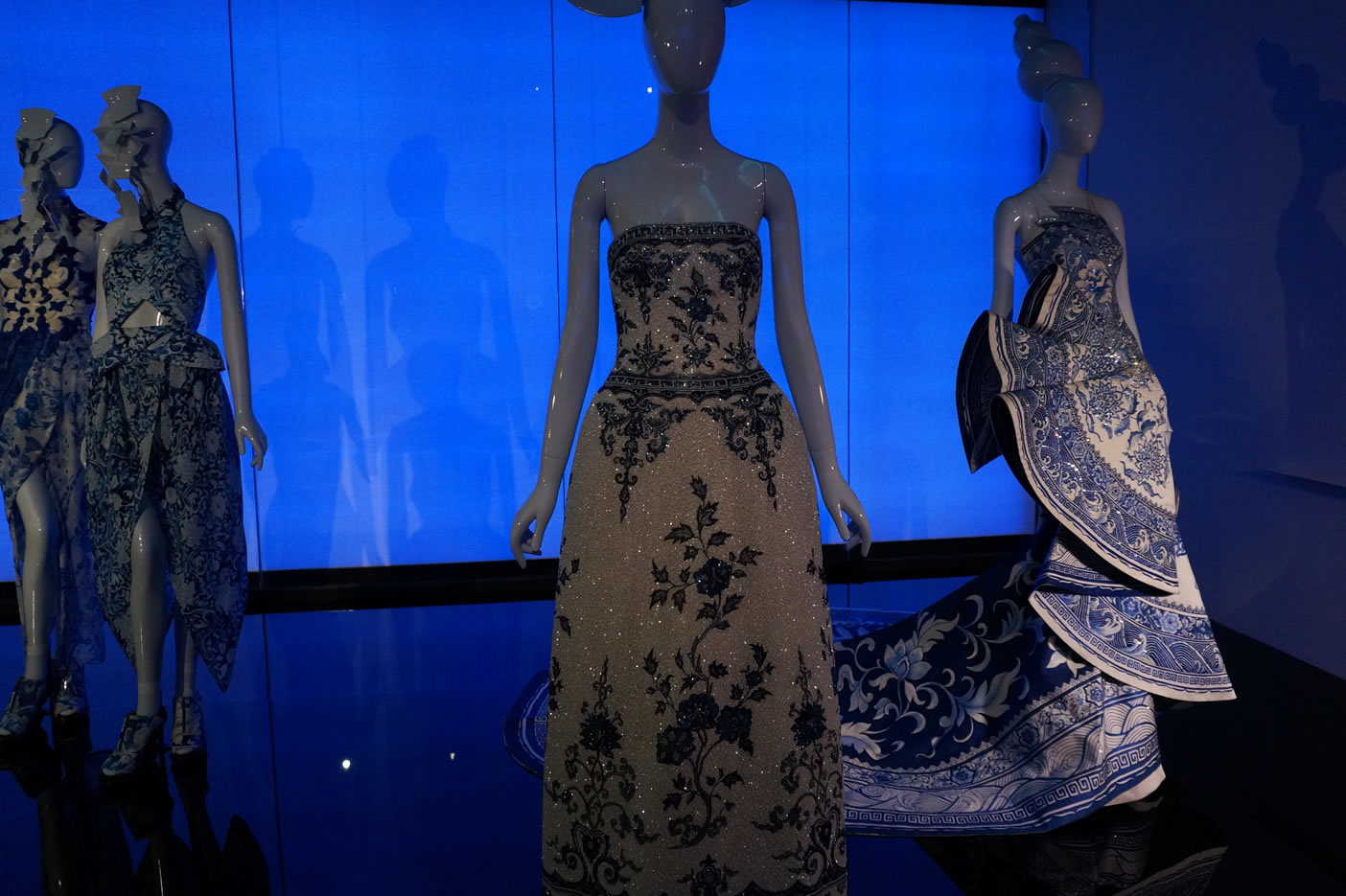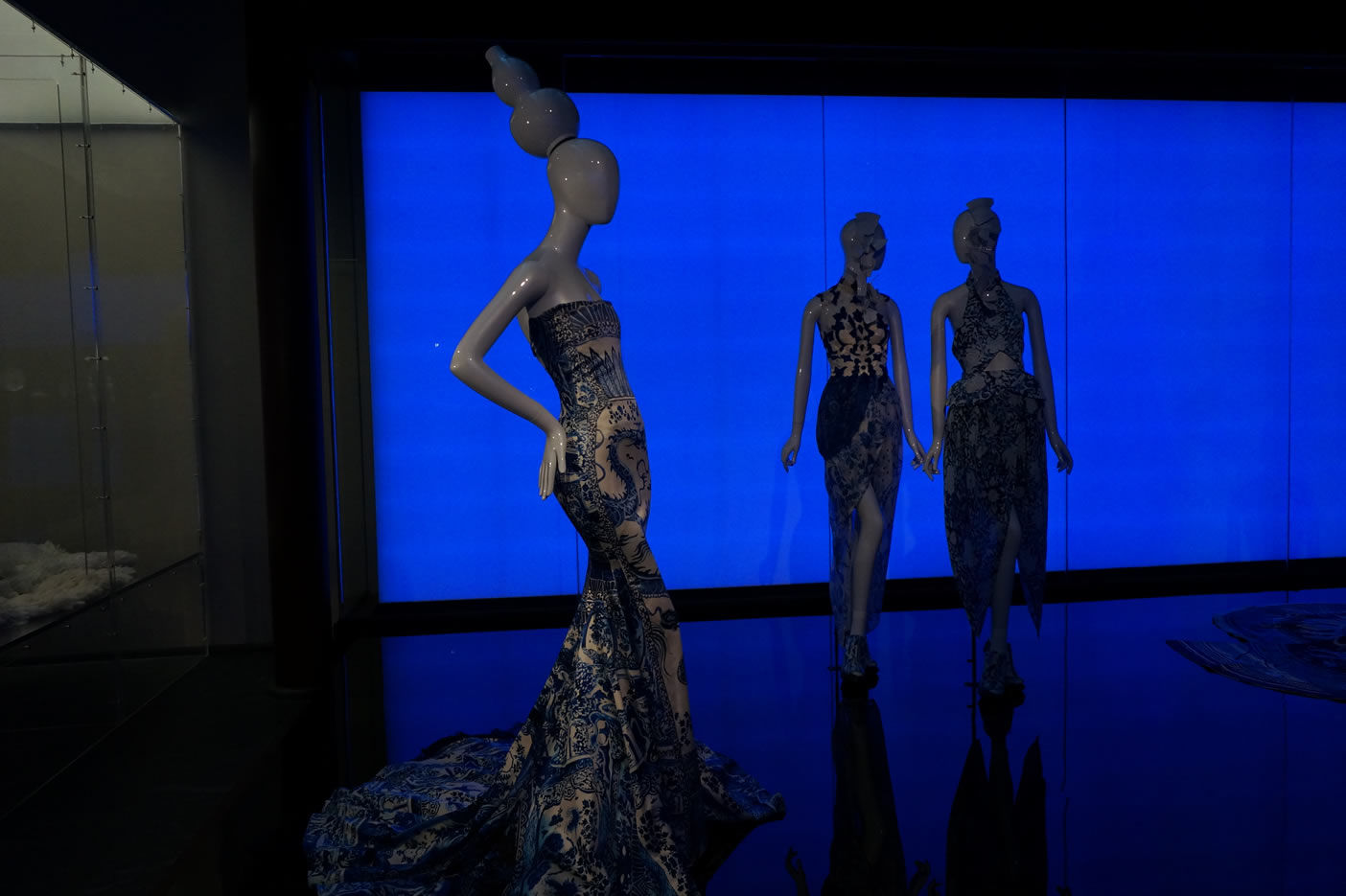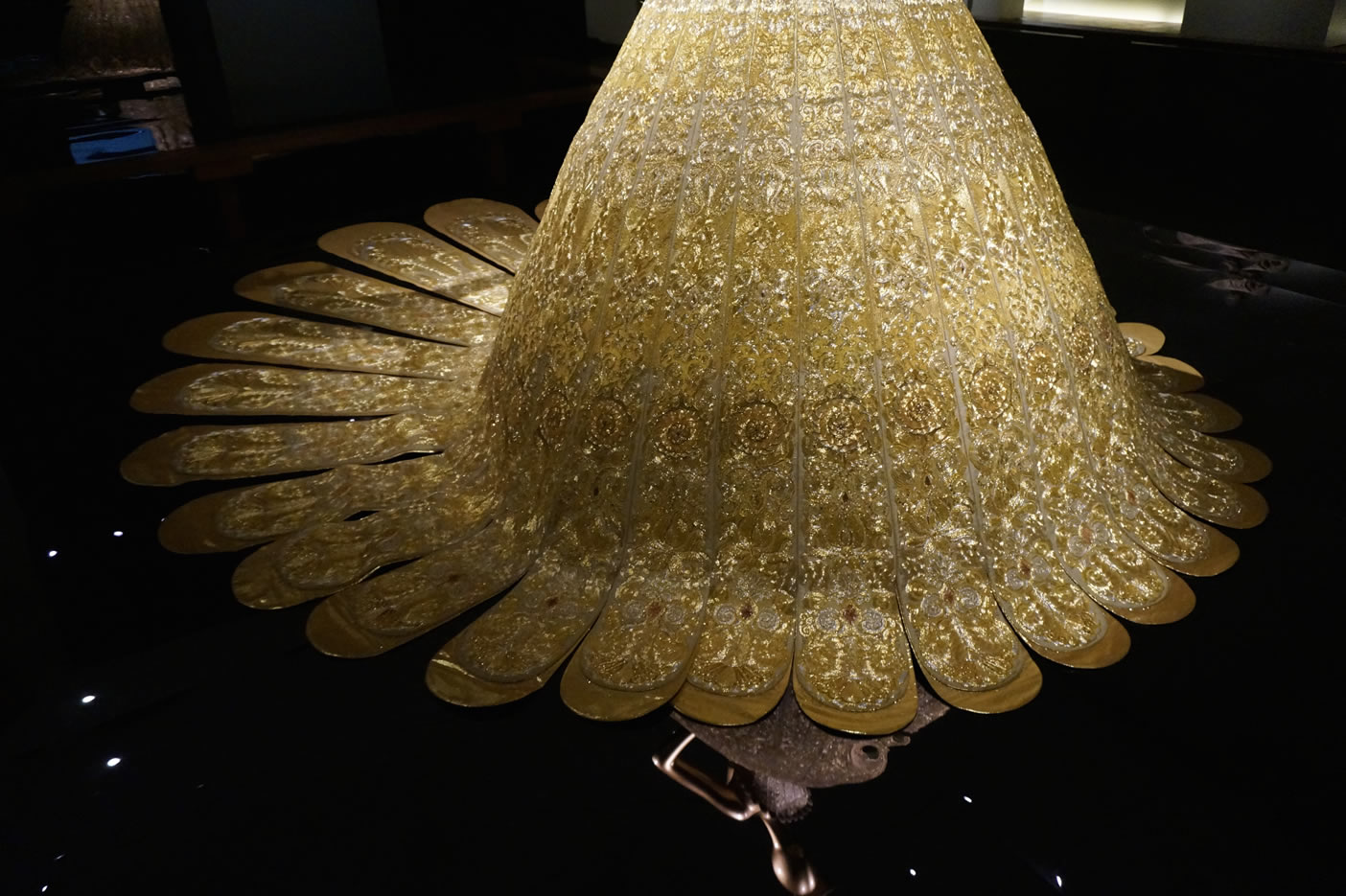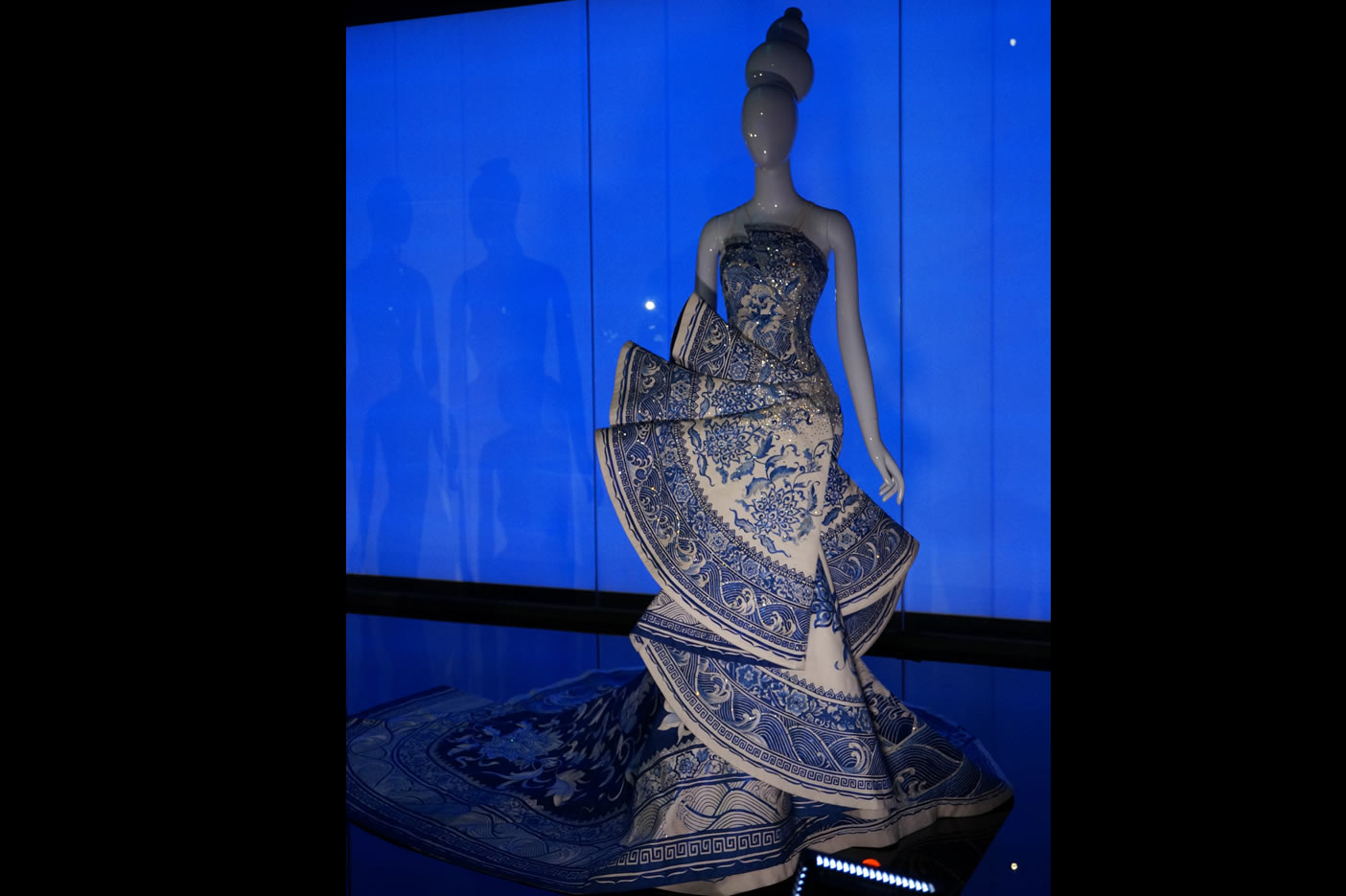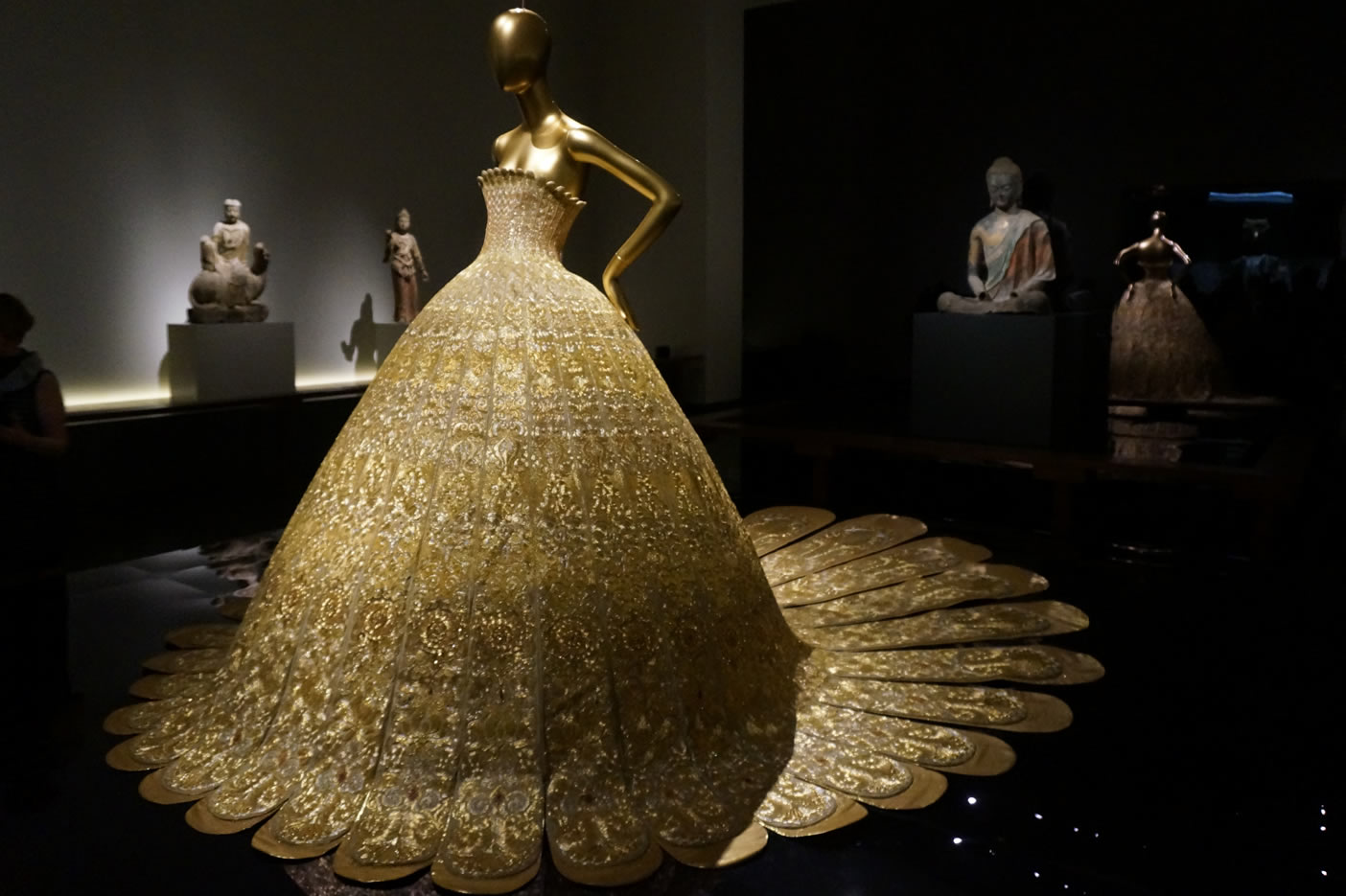The Costume Institute’s spring 2015 exhibition, China: Through the Looking Glass, is on view at The Metropolitan Museum of Art from May 7 through August 16, 2015. Presented in the Museum’s Chinese Galleries and Anna Wintour Costume Center, the exhibition explores the impact of Chinese aesthetics on Western fashion and how China has fueled the fashionable imagination for centuries. In this collaboration between The Costume Institute and the Department of Asian Art, high fashion is juxtaposed with Chinese costumes, paintings, porcelains, and other art, including films, to reveal enchanting reflections of Chinese imagery.
This exhibition explores the impact of Chinese aesthetics on Western fashion and how China has fueled the fashionable imagination for centuries. In this collaboration between The Costume Institute and the Department of Asian Art, high fashion is juxtaposed with Chinese costumes, paintings, porcelains, and other art, including films, to reveal enchanting reflections of Chinese imagery.
From the earliest period of European contact with China in the sixteenth century, the West has been enchanted with enigmatic objects and imagery from the East, providing inspiration for fashion designers from Paul Poiret to Yves Saint Laurent, whose fashions are infused at every turn with romance, nostalgia, and make-believe. Through the looking glass of fashion, designers conjoin disparate stylistic references into a pastiche of Chinese aesthetic and cultural traditions.
The exhibition features more than 140 examples of haute couture and avant-garde ready-to-wear alongside Chinese art. Filmic representations of China are incorporated throughout to reveal how our visions of China are framed by narratives that draw upon popular culture, and also to recognize the importance of cinema as a medium through which to understand the richness of Chinese history.
"…the exhibition…offers a thoughtful, expressive, and…utterly breathtaking exploration of China."—Washington Post
"A multimedia extravaganza that moves between quiet contemplation and brilliant visual assault."—Wall Street Journal
"'CHINA through the Looking Glass' at the Metropolitan Museum of Art is a spectacular new show."—The Economist
Guo Pei’s works was invited to display in this exhibition. One is blue-and-white porcelain style dress and another is an embroidery gold dress.
The story of blue-and-white porcelain encapsulates centuries of cultural exchange between East and West. Developed in Jingdezhen during the Yuan dynasty (1271–1368), blue-and-white porcelain was exported to Europe as early as the sixteenth century. As its popularity increased in the seventeenth and eighteenth centuries, in tandem with a growing taste for chinoiserie, potters in the Netherlands (Delft), Germany (Meissen), and England (Worcester) began to produce their own imitations. One of the most familiar examples is the Willow pattern, which usually depicts a landscape centered on a willow tree flanked by a large pagoda and a small bridge with three figures carrying various accoutrements. Made famous by the English potter Thomas Minton, founder of Thomas Minton & Sons in Stoke-on-Trent, Staffordshire, it was eventually mass- produced in Europe using the transfer-printing process. With the popularity of Willow-pattern porcelain, Chinese craftsmen began to produce their own hand-painted versions for export. Thus a design that came to be seen as typically Chinese was actually the product of various cultural exchanges between East and West.
Like their Western counterparts, Chinese designers frequently find inspiration in the aesthetic and cultural traditions of the East. Paradoxically, they often gravitate toward the same motifs and imagery. While it is important to distinguish between internal and external views of the East, such affinities support, at least in fashion, a unified language of shared signs. In this dress by the Chinese designer Guo Pei, Buddhist iconography provides the primary source of inspiration. The bodice is shaped like a lotus flower, which is one of the eight Buddhist symbols and represents spiritual purity and enlightenment. The motif is also embroidered onto the skirt. In an act of Occidentalism, the shape of the skirt, which has no archetypes in Eastern dress traditions, is based on the inflated crinoline silhouette that emerged as modish apparel in the West in the 1850s. As with the Western designers in this exhibition, Guo Pei does not practice an exoticism of replication but rather one of assimilation, combining Eastern and Western elements into a common cultural language.
DownLoad:http://pan.baidu.com/s/1nucj1jj

